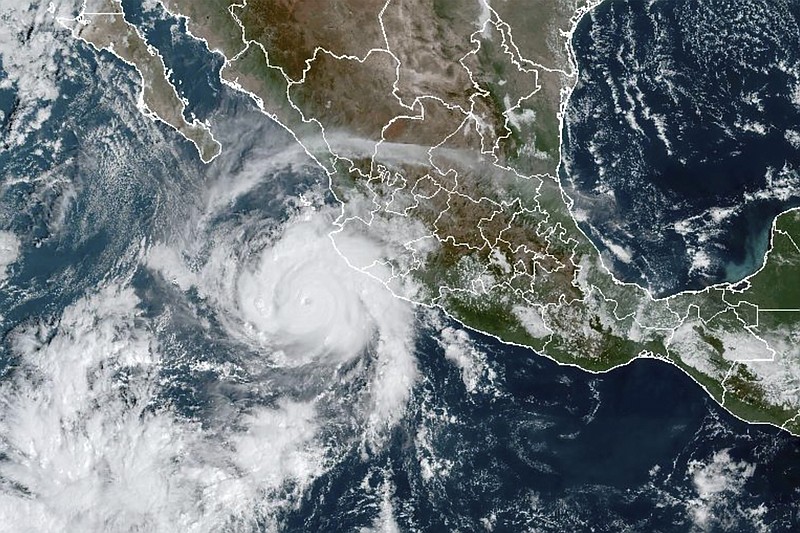MEXICO CITY -- Hurricane Roslyn slammed into a sparsely populated stretch of Mexico's Pacific coast between the resorts of Puerto Vallarta and Mazatlan Sunday morning, then declined to tropical storm force and quickly moved inland.
By Sunday evening, Roslyn had winds of 35 mph, down from its peak of 130 mph. The U.S. National Hurricane Center said Roslyn was about 60 miles east-southeast of the northern city of Torreon.
The hurricane was moving northeast at 21 miles per hour and was expected to lose strength further as it moves inland. The center expects Roslyn would dissipate before reaching Texas.
Local media reported two people died after taking shelter in unstable structures that collapsed during the storm, but the Nayarit state civil defense office said it could not confirm those deaths.
While it missed a direct hit, Roslyn brought heavy rain and high waves to Puerto Vallarta, where ocean surges lashed the beachside promenade.
Roslyn came ashore in Nayarit state, in roughly the same area where Hurricane Orlene made landfall Oct. 3.
The hurricane made landfall around the village of Santa Cruz, near the fishing village of San Blas, about 90 miles north of Puerto Vallarta.
José Antonio Barajas, the mayor of San Blas, said in a video broadcast that some houses had been damaged and power was knocked out, but nobody was killed or seriously injured.
"The winds from this hurricane were, in truth, tremendous," Barajas said. "The sound of the wind was strong."
In Tepic, the Nayarit state capital, Roslyn blew down trees and flooded some streets; authorities asked residents to avoid going out Sunday, as crews worked to clear a landslide that had blocked a local highway.
The Federal Electricity Commission reported that over 150,000 homes had lost power as a result of the storm, and that by midday Sunday, service had been restored to about one-third of those customers.
The head of the state civil defense office for the Puerto Vallarta area, Adrian Bobadilla, said authorities were patrolling the area, but had not yet seen any major damage.
The National Water Commission said rains from Roslyn could cause mudslides and flooding and the U.S. hurricane center warned that heavy rains could cause flash flooding and landslides over the rugged terrain inland.
